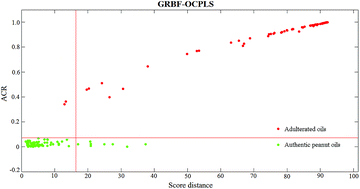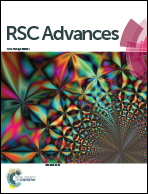One-class classification based authentication of peanut oils by fatty acid profiles†
Abstract
Developing a method of identifying oil authenticity is becoming critical for protecting customers' rights as adulteration of edible oils is a particular concern in food quality. Since adulterants in edible oils are usually unknown, the authenticity identification is a one-class classification problem in chemometrics. In this study, a one-class classification model was built to identify the authenticity of peanut oils by fatty acid profiles. Based on previous studies, 28 fatty acids were identified and quantified for peanut oils. The authenticity identification model was built by one-class partial least squares (OCPLS) classifier for peanut oils. Subsequently, the established model was validated by independent test sets. The results indicated that the OCPLS classifier could effectively detect adulterated oils and was therefore employed for authenticity assessment. Moreover, counterfeit oils adulterated with different levels of other edible oils were simulated by the Monte Carlo method and employed to test the lowest adulteration level of this one-class classifier. As a result, the model could identify peanut oils and sensitively detect adulteration of edible oils with other vegetable oils at adulteration level of more than 4%.


 Please wait while we load your content...
Please wait while we load your content...